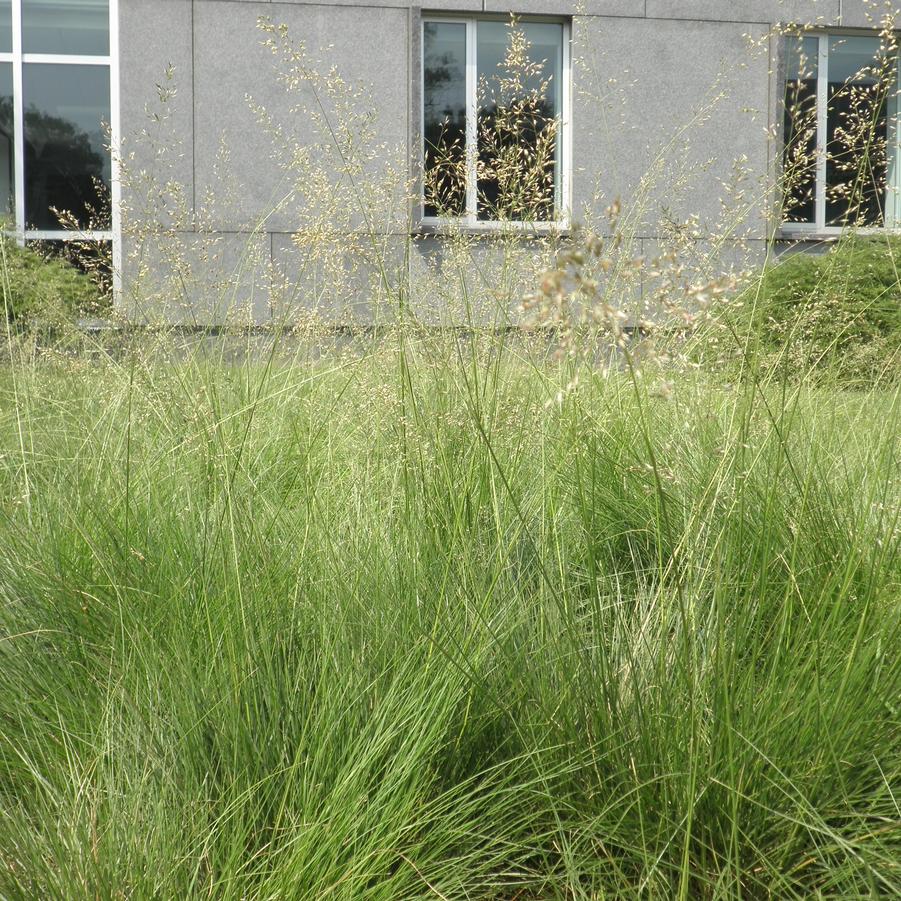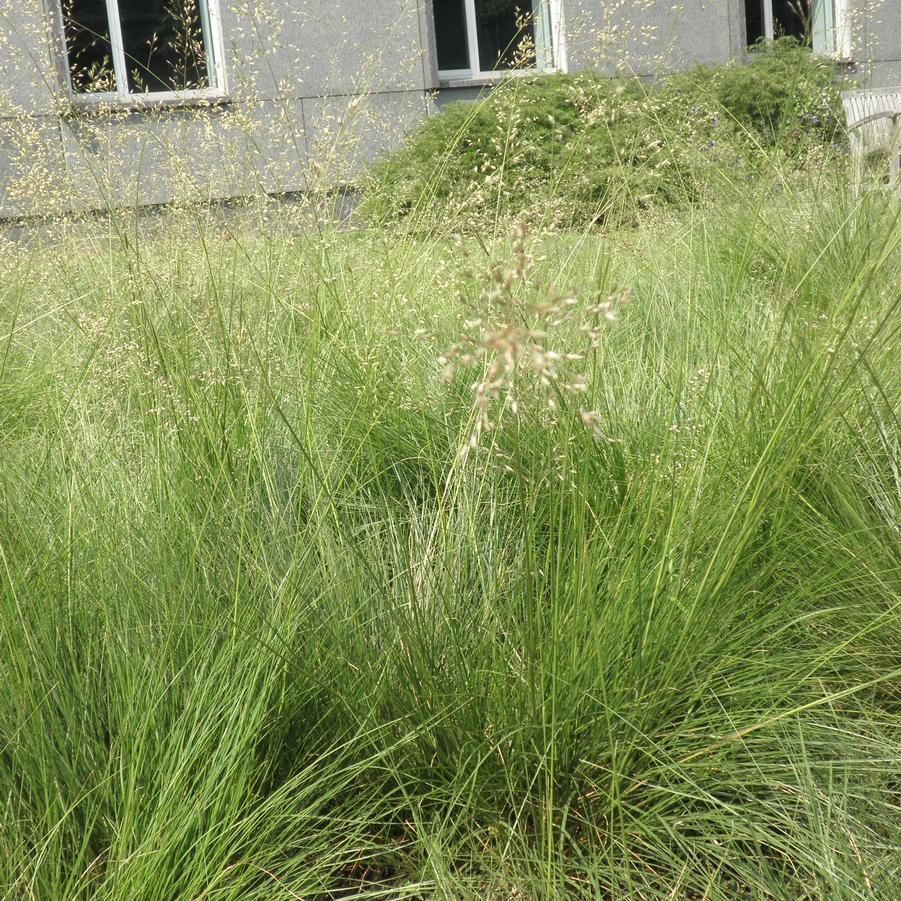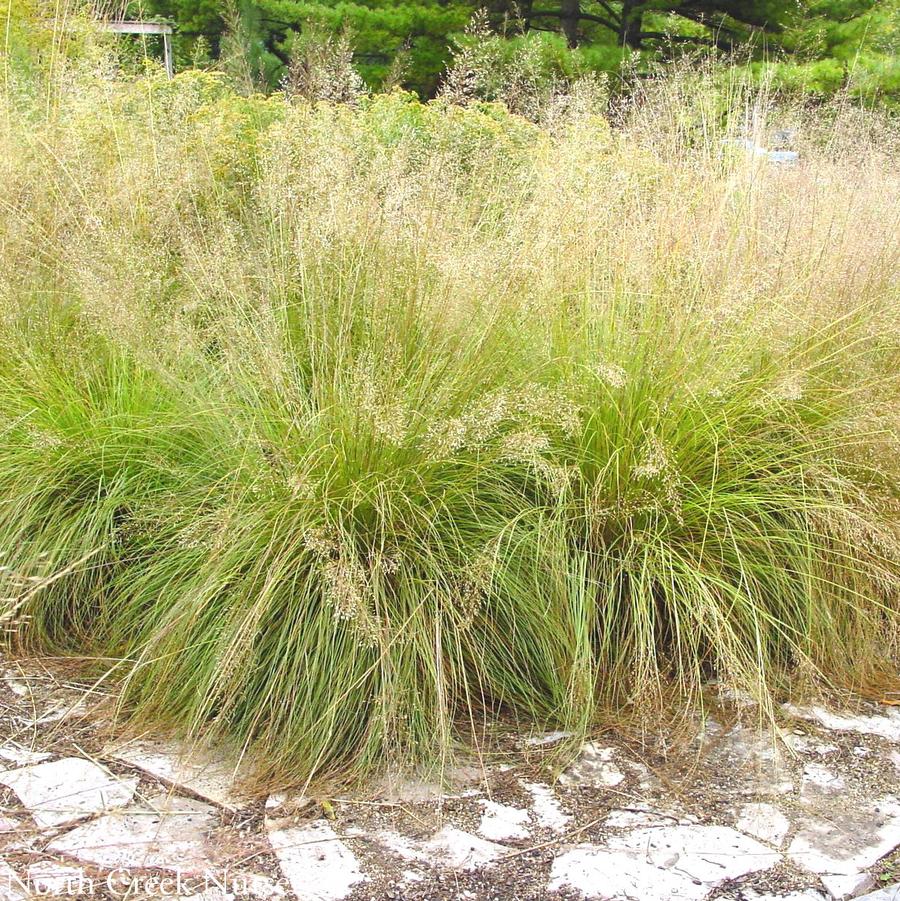





Plant Calculator
Enter the approximate length and width of the area you will be planting and click 'Calculate' to determine how many Sporobolus heterolepis you will need.
Correct and successful spacing is complex and depends on project conditions. We encourage you to call us at 877-ECO-PLUG for project specific recommendations and further assistance.
Sporobolus heterolepis
prairie dropseed
- Category: Grass, Native
- Hardiness Zone: 3-9
- Height: 2-3 Feet
- Spread: 2-3 Feet
- Spacing: 12-18 Inches
- Bloom Color: Green
According to wild Niel Dibol, of Prairie Nursery, Westfield, WI, it is "often considered to be the most handsome of the prairie grasses. It makes a well defined and very distinctive border." Fine textured, deep green foliage with lovely, light and airy flowers to 2 1/2" in September and October. Flowers have a slight fragrance similar to coriander. Often has glowing pumpkin orange fall color. Good drought tolerance.
Click here to download technical information for growers:
Exposure
| • | Full Sun |
Wetland Indicator Status
| • | Obligate Upland (UPL) |
Season of Interest (Flowering)
| • | Fall |
Propagation Type
| • | Open pollinated |
Grass Type
| • | Warm Season |
Additional Information about Sporobolus heterolepis
Sporobolus heterolepis has fine textured, deep green foliage with lovely, light and airy flowers growing 2-3’ tall in September and October. Prairie dropseed creates a tidy mound that is easy to maintain and forms easy borders. While in flower, many notice the slight fragrance similar to coriander or buttered popcorn. In the fall, it often has glowing pumpkin orange fall color. A very easy-to-grow warm-season grass, prairie dropseed is very popular in recent landscape design due to its attractive form, compatibility with other plants, and drought tolerance.
Sporobolus heterolepis grows in dry prairies in Quebec to Saskatchewan to North Carolina, Kentucky, to Texas and Colorado. It prefers dry, rocky conditions, but is tolerant of a wide range of soils, even heavy clays. It is easy to propagate by seed but is one of the best-behaved of the prairie grasses. Prairie dropseed should be cut back by late winter or early spring and can be burned seasonally to replicate natural prairie fires.
This warm-season grass earns its popularity and we have found it be happy in drier sites to moister sites in full sun. It takes some time to establish and reach its mature width. It is a larval food plant of Leonard’s skipper and several grasshoppers and leafhopper species. The seeds are eaten by sparrows and other songbirds from late summer into winter while bison and cattle forage the foliage and voles and small rodents nest in the tufts of grass and rootstock. Useful to all, Sporobolus heterolepis does well as an accent, groundcover or in rock, prairie and meadow gardens.
Native grasses are the larval food plants of the Leonard's Skipper (Hesperia leonardus), both Andropogon gerardii and A.scoparius, with needlegrass (Stipa spp.) and dropseed (Sporobolus heterolepis) (Swengel, 1993) as well as Panicum virgatum, Eragrostis alba, and Agrostis spp. (Opler and Krizek, 1984). The larvae pupate in early August probably amid plant debris like other Hesperia species (Opler and Krizek, 1984; Schweitzer, 1985). - Wisconsin DNR
Growing & Maintenance Tips for Sporobolus heterolepis
Prefers dry, rocky conditions, but is tolerant of a wide range of soils, even heavy clays. Propagate by seed. Best used as an accent, groundcover or in rock, prairie and meadow gardens.
